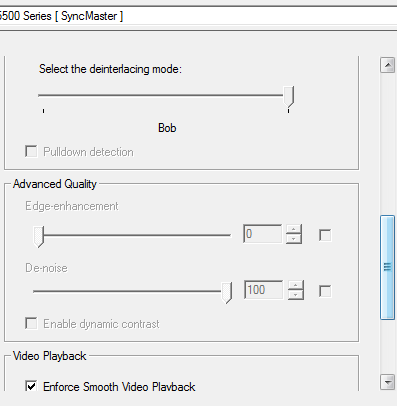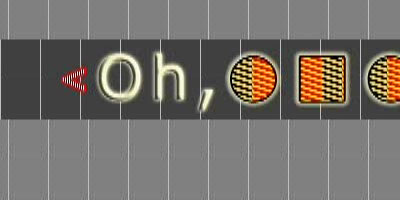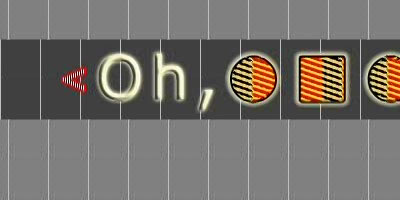The Final Word on the Best Radeon HTPC Card
by Ryan Smith on February 12, 2010 12:00 AM EST- Posted in
- Ryan's Ramblings
- GPUs
Since we published our reviews of the Radeon HD 5450 and the Radeon HD 5570, we have been going back and forth with AMD over the results of our video quality tests using the Cheese Slices test. Our initial results showed that neither the 5570 nor the 5450 had enough compute power to handle the full suite of post-processing abilities on 1080i video, the most important of which was Vector Adaptive deinterlacing. Since then, AMD has let us in on a few things that have changed that significantly, so let’s dive right in.
Enforce Smooth Video Playback (ESVP): The first thing that changed is that we finally got a complete answer on what Enforce Smooth Video Playback does. The short answer is that it’s an “idiot button” for users, to keep them from using so many post-processing settings on low-end video cards that It causes frames to drop.
Specifically, AMD has their own internal test suite that they use to test their low-end cards to see what they’re capable of when it comes to post-processing. If those cards are incapable of a certain feature(s) at certain settings, then using ESVP will have the driver quietly disable those features, so that only the features the card can keep up with are used. In essence, ESVP is a list of monitor-resolution/feature/video-resolution combinations where features need to be disabled when ESVP is active. This is all done driver side, and is not a 5000-series only feature as some people have speculated.
Anyhow, ESVP is not essential to the operation of the video card. It’s not doing anything beside disabling features on cards & situations where there are known issues, which means it’s not doing anything on faster cards; turning it on or off on a 5570 or better has no impact on anything whatsoever. However with that in mind, we tested it and found that it shouldn’t be disabled. On faster cards it’s not hurting anything (since it doesn’t have anything on its list to disable) and on slower cards we’ve found that AMD’s settings are in fact right on the nose. For example if we forced Vector Adaptive deinterlacing on the 5450 at 2560x1600, the card would drop 3 frames over the span of the Cheese Slices test. ESVP was doing the right thing by disabling it. Thus as far as we can tell, any feature disabled with ESVP turned on is disabled for a good reason.
With that in mind, we’re going to stick to our original suggestion of leaving ESVP enabled on all AMD cards. Enthusiasts can turn it off and tweak things if they want to, but AMD looks to have done a solid job profiling their cards – if you try to outsmart ESVP, you’re probably going to be dropping frames in doing so.
Radeon HD 5570: As we noted earlier, the 5570 original failed our Cheese Slices test. After AMD’s engineers looked in to it, it turns out that the drivers sampled with the card (ATI_8.69_RC3_Win7_Vista_Jan14) had a 5570-specific bug when ESVP was enabled. If you recall our review of the card, enabling ESVP would forcibly disable all post-processing and advanced deinterlacing features on the 5570, both internally and in the Catalyst Control Center itself. That was the bug – ESVP wasn’t supposed to be disabling anything.

The old AVIVO control panel on the Radeon HD 5570
AMD has since provided us with a newer build of their drivers (ATI_Win7_Vista_8.692RC2_Feb10, available from AMD here) which correct this issue. ESVP no longer blocks the operation of any post-processing features.
We went ahead and tested this driver in-depth, and the driver does indeed correct the issue. The 5570 is able to use all post-processing and advanced deinterlacing features with ESVP enabled and disabled. The quality was just as good as the 5670 (we would expect no less) and we found no evidence of the card dropping any frames.

Old Drivers: Radeon 5570 Deinterlacing

New Drivers: Radeon 5570 Deinterlacing
Thus as far as we can tell, the 5570 is in fact the perfect Radeon HTPC card that we have been looking for. It’s the cheapest, smallest, and coolest running 5000-series card that can offer the full suite of post-processing abilities, and of course it has the 5000-series’s audio bitstreaming capabilities. Since the whole point of this exercise was to identify the lowest 5000-series card that was still perfect for HTPC use, we have found it. And the best part is it even fits in a low-profile case.
Radeon HD 5450: While the driver bug in the earlier driver set only affected the 5570, in the process we learned something that had an impact on the 5450. As we discussed previous with ESVP, it takes in to consideration the resolution of the monitor along with the resolution of the video (i.e. is it HD) and the features requested. It turns out that we were inadvertently causing the 5450 to do worse than what it’s capable of.
For our testing, we use a Samsung SyncMaster 305T 30” LCD. The 305T is a bit unusual in that it doesn’t have a built-in scaler, so we ran our desktop at the full 2560x1600 resolution for the Cheese Slices test since we can’t do 1:1 pixel mapping of a lower resolution. This allowed us to run Cheese Slices in a window unscaled.
It turns out that the difference between rendering a 1920x1200 desktop and a 2560x1600 desktop is enough to make the 5450 start dropping frames when Vector Adaptive deinterlacing is in use. If we forced the issue by disabling ESVP, we would see a few frames get dropped in the Cheese Slices test when running at 2560x1600, but not at 1920x1200. This is actually something AMD was aware of, and as we just found out AMD has ESVP disable Vector Adaptive deinterlacing on a 2560x1600 desktop, but leaves it enabled at 1920x1200. Or in other words, the 5450 has enough compute power to do Vector Adaptive deinterlacing at HD desktop resolutions, just not at resolutions above that.

1920x1200: Radeon 5450 Deinterlacing
The important thing here is that HDTVs still top out at 1920x1080 – you (okay, most of you) wouldn’t be running a bigger display as an HDTV. Hence if we hooked this up to an HDTV via HDMI, we would be using a resolution below 2560x1600, and the 5450 would have used Vector Adaptive deinterlacing on all media. Our poor results in Cheese Slices had more to do with our desktop resolution than it did the abilities of the card.
With that said, there is one catch: the 5450 doesn’t have enough compute power to do any further post-processing on 1080i video besides Vector Adaptive deinterlacing. Just doing the decoding and that deinterlacing requires everything the 5450 can squeeze out, which means there’s nothing left for edge enhancement, de-noise, dynamic contrast, etc. So while the 5450 is a very capable HTPC card (more so than we first thought), it is not the perfect HTPC card like the 5570. If you need every last bell & whistle, the 5450 isn’t quite up to the task. But with Vector Adaptive deinterlacing working, it’s a reasonable expectation that the 5450 offers enough for most people – compared to Vector Adaptive deinterlacing, it’s in our own experience that the other post-processing features go unused most of the time.
So the 5450 is still the almost-perfect HTPC card, but it’s actually quite close. Unless you need more than Vector Adaptive deinterlacing, the 5450 would be as good of a fit as the 5570. To that end it’s the cheapest of the 5000-series, and it’s passively cooled, which certainly has its advantages.
Other Issues: We have had several HTPC enthusiasts email us over the last week asking about various features or complaining about various issues they have encountered. We’ve seen one particularly good thread over at AVSForum that lists out these issues, and while we don’t consider any of these to be nearly as significant as the earlier ESVP & deinterlacing oversights, we have passed the list on to AMD. At the very least, it’s something to take in to consideration if you’re going the HTPC route.










53 Comments
View All Comments
pankov - Sunday, February 14, 2010 - link
As the original poster herehttp://forums.amd.com/game/messageview.cfm?catid=2...">http://forums.amd.com/game/messageview....light_ke...
I've just upgraded my main monitor from 20" (1680x1050) to 23" (1920x1080) and found that at that resolution I can't select Vector Adaptive (or anything above BOB) while my second monitor (FullHD front projector) is active. At 1680x1050 there is no problem. At the moment I'm using 4670 with 512MB GDDR3. For the weekend I got a 5750 with 1GB of memory and it didn't have this problem. Sadly it's too hot for passive cooling as I did with the 4670 and I'll probably have to go for 5670 but I'm worrying if it will handle the two FullHD monitors? Also should I go for 1GB or 512MB will be enough?
pankov - Sunday, April 4, 2010 - link
Guys,please, can somebody help me out with some info?
I'm really sick of this Smooth Video and having to turn it off after each refresh rate change (I do need them for watching different content 24/50/60 fps).
I now that I have to change my old 4670 but with what? I'd prefer to go with 5670 because it's cooler ... and if possible with 512MB of memory ... again to be cooler ... and cheaper but I have to be sure it will work with two 1920x1080 displays and Vector Adaptive Deinterlacing.
aegisofrime - Sunday, February 14, 2010 - link
Topic. Enabling it on the drivers is one thing, but do you actually need specific software to utilize them? I use Media Player Classic. Is it a passive kind of thing? That by turning these features all, automatically all my videos will go through these post-processing features?Ryan Smith - Monday, February 15, 2010 - link
You need software that's DXVA-aware, which these days is a fair bit of software. Media Player Classic - Home Cinema's H.264 and WMV3/VC-1 decoders are DXVA-aware, as are PowerDVD/WinDVD's decoders. Win7's built-in MPEG-2, WMV9/VC-1, and H.264 decoders are also DXVA-aware.Rick83 - Monday, February 15, 2010 - link
And even the videolan folks have it in their sources. Just not in the released binaries yet. Should make it into those soonish though - probably Q2...shiggz - Saturday, February 13, 2010 - link
In my observation in dealing with Nvidia/ATI/Intel the term "driver bug" on secondary features with new cards= "No one here cared to mess with it before and it only took a few minutes to develop once someone complained."I have seen many good promised features by marketing sit on the driver teams shelf for months after a cards released. Especially when it comes to small specific video features on low end cards.
carlhenry - Saturday, February 13, 2010 - link
would a 250w psu be able to handle the 5570? if not, then i guess the 4550 would be the best choice for most htpc. or the mysteriously slower 5450 (on spec sheet it should be faster than the 4550) is the best for htpc'ers. would really like to confirm if a 250w psu can handle the 5570.hybrid2d4x4 - Sunday, February 14, 2010 - link
Most definitely yes! As long as you run a mainstream (65W) CPU, mobo and a single HDD/ODD, you could go as low as a 120W PicoPSU.dagamer34 - Saturday, February 13, 2010 - link
Handle while idling? Probably. Handle when under full load during gaming? A bit more dicey. But for most HTPC stuff like video decoding, it shouldn't be too bad. I run a 4650 with a TDP of 55W on a 220W PSU. My feeling is that you should be able to comfortably run any low-profile designed card in a low profile PC, since it's designed not to suck up a ton of juice (even ignoring the fact that it needs to be cooled with large fans)geok1ng - Saturday, February 13, 2010 - link
And once again AT solves another Tech Mistery!But the post reveals another GREAT flaw of ATI cards:
NO CENTERED RESOLUTIONS!
A GPU should be capable of displaying a smaller resolution in a 30" display by putting black bars above and below the image. In doing so the image would be 1:1 without any scaling artifacts, and would sit in the middle of the screen. My old 8800GT could do that, my 4870X2 simply can't.